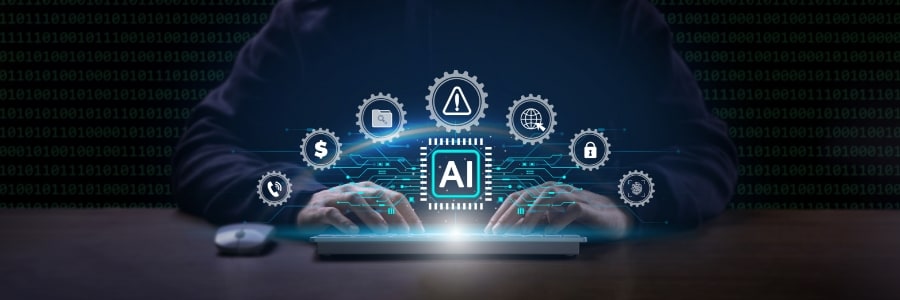Cybersecurity isn’t what it used to be. With artificial intelligence (AI) entering the battlefield, cybercriminals are automating threats and customizing scams like never before. Discover how AI is transforming cybercrime, and how defenders can prepare for this escalating digital arms race.
We now face smarter threats that require less effort to deploy
In the past, hacking required technical know-how, patience, and time. Today, with generative AI tools such as ChatGPT, even inexperienced attackers can craft convincing phishing emails or write malware code tailored to specific victims with minimal effort.
Cybercriminals are also using AI to scan for system vulnerabilities, automate their attacks, and refine their methods based on real-time responses. These aren’t just mass, scattershot threats anymore; they’re targeted, efficient, and eerily personalized.
Attackers are going above and beyond email scams
Phishing is still a go-to tactic, but now, it’s far more convincing. AI-generated messages can be tailored to mimic the writing tone of a CEO, coworker, or vendor with uncanny accuracy. That makes it easier to trick employees into clicking links or handing over sensitive data.
Alarmingly, AI can be trained to mimic human voices, opening the door for high-stakes phone scams (also called vishing), or even create deepfake videos that appear genuine. Cybercriminals are starting to use these techniques to bypass security measures, manipulate behavior, or impersonate individuals with stunning realism.
An AI arms race between cybersecurity defenders and cybercriminals
As AI-driven threats evolve at an alarming rate, cybersecurity professionals are racing to keep up. Just as attackers are using AI to scale and sharpen their tactics, defenders are deploying AI to spot patterns, flag unusual behavior, and respond to incidents more quickly. But it’s not a fair fight; cybercriminals only need to find one weak point, while defenders have to protect the entire system.
Some cybersecurity experts believe we’re already seeing the early signs of an AI-driven cyberwar. For instance, state-sponsored actors and organized crime groups are likely leveraging AI to target critical infrastructure and global supply chains, with consequences that could ripple far beyond a single business or region.
How to balance innovation with responsibility
The dual-use nature of AI presents a fundamental challenge. The same technology that helps companies streamline operations or write marketing copy can just as easily be twisted for harm. That’s forcing businesses and governments alike to rethink their approach to AI governance, cybersecurity investment, and digital ethics.
The best modern defense is layered, combining technology, training, and vigilance. That includes educating employees about new threats, investing in AI-powered threat detection, and keeping software and systems updated.
What’s next?
As AI continues to evolve, so will the threats. Cybercrime will likely become even more autonomous, scalable, and convincing. Raising awareness remains our primary defense against this shifting landscape. By understanding how AI is reshaping the cybersecurity landscape, we can begin to prepare for — and push back against — the new generation of digital threats.
Reach out to us for a robust cybersecurity system. Don’t take any chances; boost your protection today.
